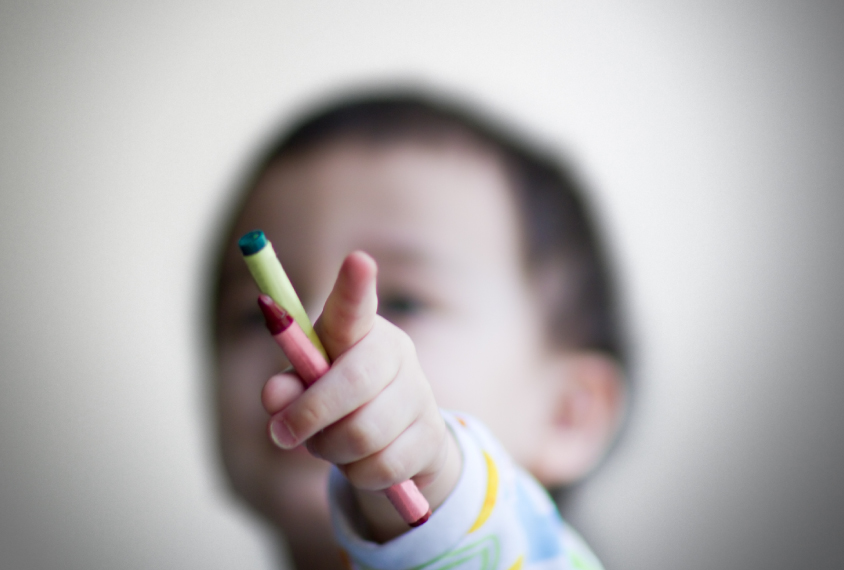
Allen Donikowski / Getty Images
Rare genetic condition may offer early glimpse of autism
Children who have both tuberous sclerosis and autism have features nearly identical to those of children with autism alone.
Children who have both tuberous sclerosis complex (TSC) and autism have features that are nearly identical to those of children with autism alone, according to a new study. Because TSC is detectable at birth, it might offer clues about the earliest stages of autism, the study suggests1.
TSC is a rare syndrome characterized by benign tumors, called tubers, throughout the brain and body. Roughly half of all children with the syndrome are eventually diagnosed with autism. But it has been unclear whether their features are manifestations of TSC or represent autism in its own right, says lead researcher Shafali Jeste, associate professor of psychiatry and neurology at the University of California, Los Angeles. The new study suggests the latter is true.
The study, published 20 July in Neurology, also reveals that children with TSC who do not have autism are indistinguishable from controls on the social communication portion of an assessment called the Autism Diagnostic Observation Schedule (ADOS).
“After I did the study, I said, ‘Okay, now I’m officially comfortable with the comment that TSC is a good model for [studying] autism,’” Jeste says.
Paying attention to autism features in young children with TSC should inform both research into autism and the treatment of these children, says Constance Smith-Hicks, a research scientist at the Kennedy Krieger Institute in Baltimore, who was not involved in the study.
“I think that it’s important to study autism in all groups of children with autism, regardless of their genetic etiology,” she says.
Long view:
Jeste and her colleagues began following children with TSC starting at 3 months of age. In 2014, they reported that between 1 and 3 years old, children with TSC who are later diagnosed with autism have lower nonverbal intelligence scores than those who have TSC alone2.
This discovery raised the possibility that what appears to be autism in children with TSC instead stems from intellectual disability.
To test this idea, the team administered the ADOS to 18 toddlers with TSC alone, 18 with TSC and autism, 82 with autism from an unknown cause and 16 controls; the children were all roughly 3 years old.
The test includes 20 items used to assess social communication. Clinicians rate children on each item, including the ability to make eye contact and whether they respond to their name. The clinicians typically then sum up the scores and assess whether a child’s score is above the cutoff for an autism diagnosis. However, two children who have the same total score can differ greatly across individual items.
In the new study, Jeste and her colleagues looked at the pattern of scores for each item. Children who have both TSC and autism show the same pattern as children with autism alone, the researchers found. “It’s strikingly similar,” says Walter Kaufmann, professor of neurology at the Greenwood Genetic Center in South Carolina, who was not involved in the work.
Common therapy:
Children with TSC alone, by contrast, show the same pattern of scores on the ADOS items as controls do.
However, despite the parallels between the two groups of children with autism, differences might emerge later, once the children begin to speak, Kaufmann says.
What’s more, the 82 toddlers with autism in the study may not be representative of all children with autism, given that the condition is heterogeneous, Kaufmann says. “Thinking there is a true ‘autism’ is a problem with all of these studies,” he says.
Still, the study supports the notion that researchers can learn more about autism by studying TSC. It also suggests that children who have TSC and autism will benefit from behavioral interventions for autism.
“We really want the finding to help reinforce the need for our infants with TSC to receive autism-directed services,” Jeste says. “There is definitely a misperception in the community that if you have TSC, that means you don’t have autism.”
References:
Recommended reading

New organoid atlas unveils four neurodevelopmental signatures
Explore more from The Transmitter

The Transmitter’s most-read neuroscience book excerpts of 2025

Neuroscience’s leaders, legacies and rising stars of 2025


